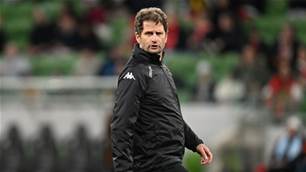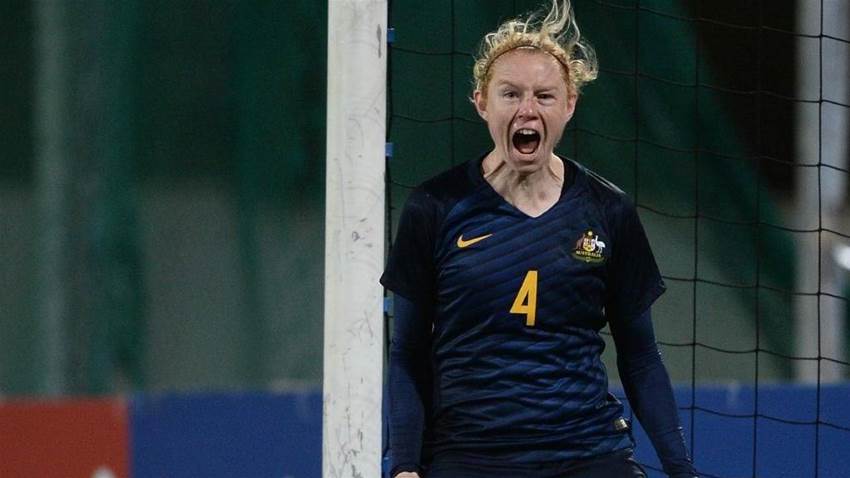While much has been made about the large number of Matildas moving to England's FA Women's Super League in the last year, as well as the continued focus on those playing in the American National Women's Soccer League, another recent 'migration' has been less talked about: Australia's Nordic Invasion.
Matildas plying their trade in Nordic countries is nothing new. Australians have played there professionally for years now. Lisa De Vanna was one of the first to pave the way when she joined the Swedish side AIK Fotboll in 2008.
However, what is different this year is the sheer number of Australians contracted to the region's top three northern hemisphere summer leagues: Norway's Toppserien, Iceland's Pepsi Max Úrvalsdeild Kvenna, and Sweden's OBOS Damallsvenskan.
These three leagues currently have as many Australian women who signed to play in them over their respective next seasons, eight players total, as the FAWSL and the NWSL combined.
Norway's Toppserein is the biggest Aussie attraction. Tameka Yallop could return for her fourth season there with Klepp IL. While her arrival in Norway has yet to be confirmed she is still listed on the Norwegian FA's as part of the Klepp 2020 squad.
Two young Australians are in confirmed to be in Norway for their first overseas seasons abroad. Teagan Micah signed with Anja-Bjornar in March while Karly Roestbakken joined LSK Kvinner last month.
Two seasoned veterans could also play Toppserien football in 2020. Clare Polkinghorne and Katrina Gorry both signed with Avaldnes IL in January, adding Europe to their overseas resumé after having previously played in both Japan and America. (The Women's Game was unable to confirm whether they have joined Avaldnes IL ).
Kiwis are also playing in this league. Victoria Esson was contracted by Avaldnes alongside Polkinghorne and Gorry. C.J. Bott will be playing with Valerenga for the upcoming season. Half the league's ten teams should have at least one Kiwi or Aussie in their ranks for 2020.
Sweden's OBOS Damallsvenskan and Iceland's Pepsi Max Úrvalsdeild Kvenna are lesser nordic draws but draws nonetheless. Both leagues have a player from both southern hemisphere nations signed to teams.
Elise Kellond-Knight signed with Swedish Damallsvenskan club Kristianstad DFF earlier this year while Kiwi striker Hannah Wilkinson just signed with Djuradens IF.
Fellow Kiwi Betsy Hassett joined the Icelandic league side Stjarnan for 2020 while Canberra United's young gun Laura Hughes signed her first overseas contract with Throttur Reykjavik.
The same physicality, opportunity to improve, and ability to easily communicate in English, also exist in Norway and Sweden. The leagues have other comparatives with both the FAWSL and NWSL.
The Nordic leagues are all well established and offer an organized, professional, and competitive environment. Like the FAWSL, they are also leagues that can give you the opportunity to play UEFA Champions Leagues football.
C.J. Bott will get to compete in Europe's top competition this upcoming year.
There are also advantages. A big one is that the travel is significantly less in the Nordic leagues, and the FAWSL, then it is in the American NWSL league.
When choosing to leave the Chicago Red Stars, Kerr did state that going to a league with less extensive travel would help extend her career.
The Nordic leagues, like the NWSL, do offer one big advantage to Australian football that the FAWSL cannot: the ability to come back to the W-league.
These league's calendars normally have off-seasons that match with the Australian W-League summer season.
While much can be said about the impacts year-round playing can have on players, and they are valid to consider, ensuring that big Matildas names continue to play W-League is imperative.
First off, it is important for the popularity of the league. Matildas are still a big draw within the W-League, especially for fans that are less knowledgeable about the league's non-international players.
They are also important for the competitiveness of the W-League.
Having seasoned professionals, who bring back both international level experience and international league experience only helps to enhance the level of professionalism, expectations and competitiveness within Australia.
Moreover, the more Australians come back to the W-League to play, the more the Nordic leagues could look to the W-League as a possible recruiting and development ground. Having more avenues opened to Australians all around the world will lead to greater opportunities.
For now, the next opportunities those contracted to Nordic Countries have to play are their respective upcoming seasons. All three nations will go ahead with full 2020 competitions.
The Icelandic Úrvalsdeild Kvenna season started this weekend and he Swedish Damallsvenskan will start two weeks later, on the 27th of June.
Like the Icelandic league, they will play their full home and away game season. To be able to finish in time, the league will last five months instead of the usual seven. However, the previously programmed Olympic break has been cancelled due to the game's move to 2021.
The Norwegian Toppserien will also feature a round-robin home and away schedule for the ten teams in the league.
Practice and preparatory matches have already begun. With a subsidy of 1.1 million kroner a month from the Norwegian FA, the league will start on the 3rd of July and finish on the 15th of November.
After this, there is a good chance that we could see all players return to the W-League. Yallop has routinely returned every Australian summer. Hughes is also planning on returning, brimming with European experience for the next W-League campaign.
It will be a brand new W-League narrative next season, seeing the players they've become.
Related Articles

'Timing not right': Montemurro's verdict on Matildas vacancy

Matildas: 'Fourth at the Olympics is honestly the worst place you could come'
.jpg&h=172&w=306&c=1&s=1)












